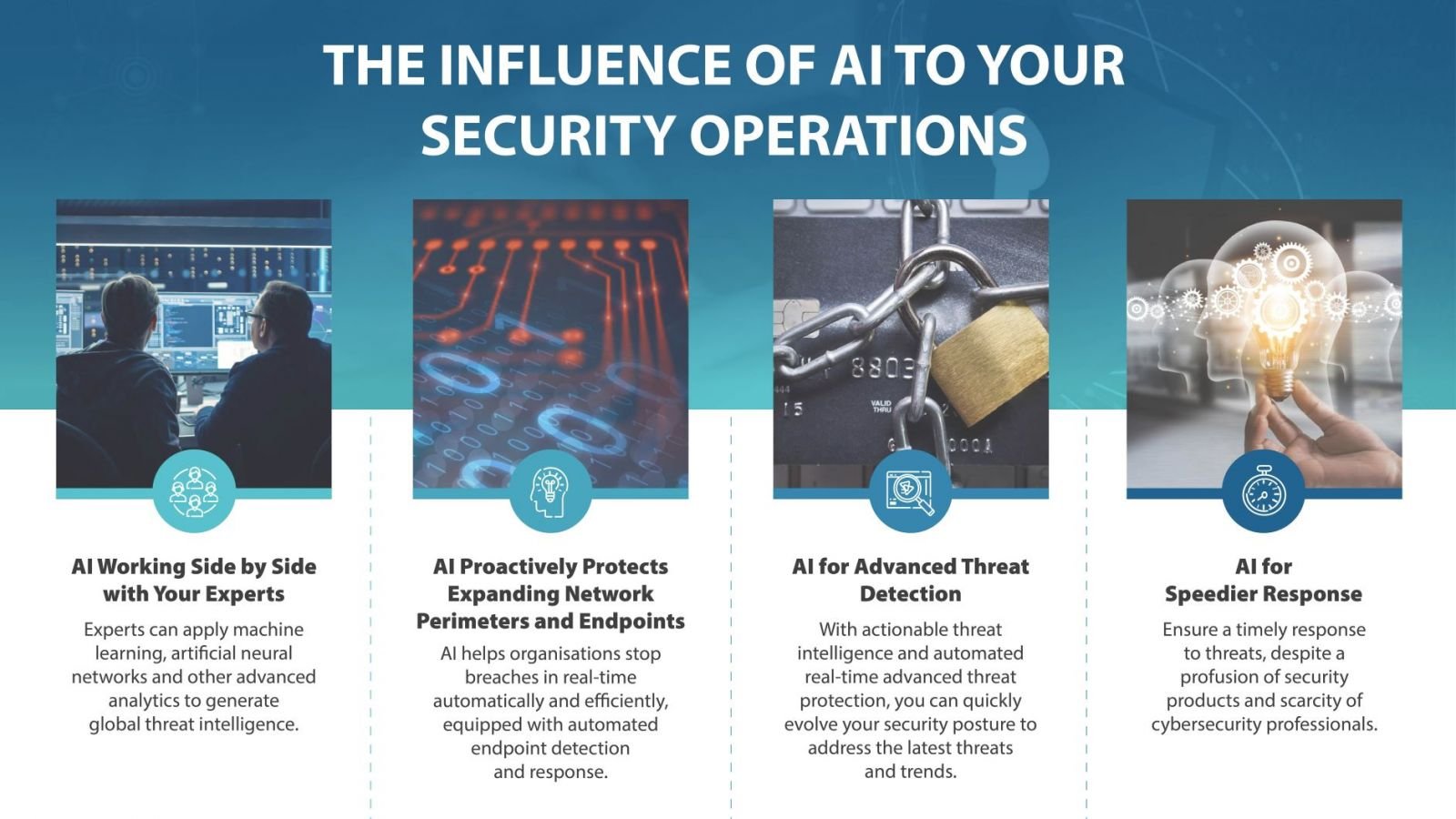The landscape of cybersecurity is witnessing a seismic shift with the advent of artificial intelligence (AI), heralding a new era of challenges and opportunities for organizations globally. As we dive deeper into 2024, AI’s role in cybersecurity has become a pivotal point of discussion, offering both innovative defenses and sophisticated threats.
Key Highlights:
- AI-driven attacks, including ‘Package Illusion’ tactics, pose new challenges.
- The evolution of AI not only in defense but as an offensive tool by attackers.
- Advanced evasion techniques in cloud security requiring nuanced behavioral security measures.
- AI’s capability to democratize cybercrime by enabling sophisticated malware creation.
- The critical importance of real-time threat detection and behavioral analytics powered by AI.
- Zero-trust architecture enhanced by AI for more sophisticated access controls.
- The continuous need for collaboration in sharing threat intelligence.

AI: A Double-Edged Sword in Cybersecurity
AI’s integration into cybersecurity heralds a future where both defenders and attackers leverage sophisticated algorithms to outmaneuver each other. This dual use of AI introduces a complex dynamic where cybersecurity teams must constantly evolve to address not only traditional threats but also those AI-enabled attacks designed to manipulate software dependencies and evade detection mechanisms. The cybersecurity landscape is thus entering a phase where the offensive use of AI, such as in ‘Package Illusion’ attacks, presents a nuanced challenge that requires an equally advanced AI-driven response.
Evolving Cloud Security and Cybercrime
The expansion of cloud computing brings forward advanced evasion techniques, underscoring the necessity for AI and machine learning algorithms to detect anomalies and mitigate threats that bypass traditional security measures. Concurrently, AI’s role in facilitating cybercrime cannot be overstated, with tools capable of generating sophisticated malware, lowering the barrier to entry for potential attackers.
The Vanguard of AI in Threat Detection
AI-driven cybersecurity solutions stand at the forefront of defending digital spaces through advanced algorithms and real-time response capabilities. By integrating behavioral analytics, these systems can identify deviations from normal patterns, enabling proactive defense mechanisms that not only detect but predict potential threats.
Zero-Trust Architecture and AI Integration
The principle of zero-trust architecture, fortified by AI, signifies a strategic shift towards continuous verification and adaptive access controls. This evolution highlights AI’s role in enhancing the security framework, enabling organizations to respond more precisely to emerging threats by analyzing user behavior and device posture.
Collaboration and Innovation in Cybersecurity
As the cyber threat landscape diversifies, collaboration between public and private sectors becomes crucial in sharing threat intelligence and best practices. This collective approach enhances the defense against sophisticated threats and ensures a more resilient cybersecurity posture across industries.
A Future Anchored in AI-Driven Defense
The adoption of AI-driven security solutions offers unprecedented efficiency in identifying and neutralizing cyber threats, leveraging machine learning algorithms to predict and prevent attacks before they occur. This shift towards AI-enriched cybersecurity practices underscores the need for continuous innovation and adaptation in the face of an ever-evolving threat landscape.
As we navigate the complexities of AI-driven cybersecurity in 2024, it’s evident that AI will play a defining role in shaping the future of digital defense. Organizations must remain vigilant, embracing the opportunities AI presents for enhanced security measures while also preparing for the sophisticated threats it enables. The balance between leveraging AI for defense and mitigating its use in offensive strategies will be critical in securing the digital domain. In this dynamic battleground, the emphasis on innovation, collaboration, and strategic foresight will be key in harnessing the full potential of AI to safeguard against the cybersecurity challenges of tomorrow.

















